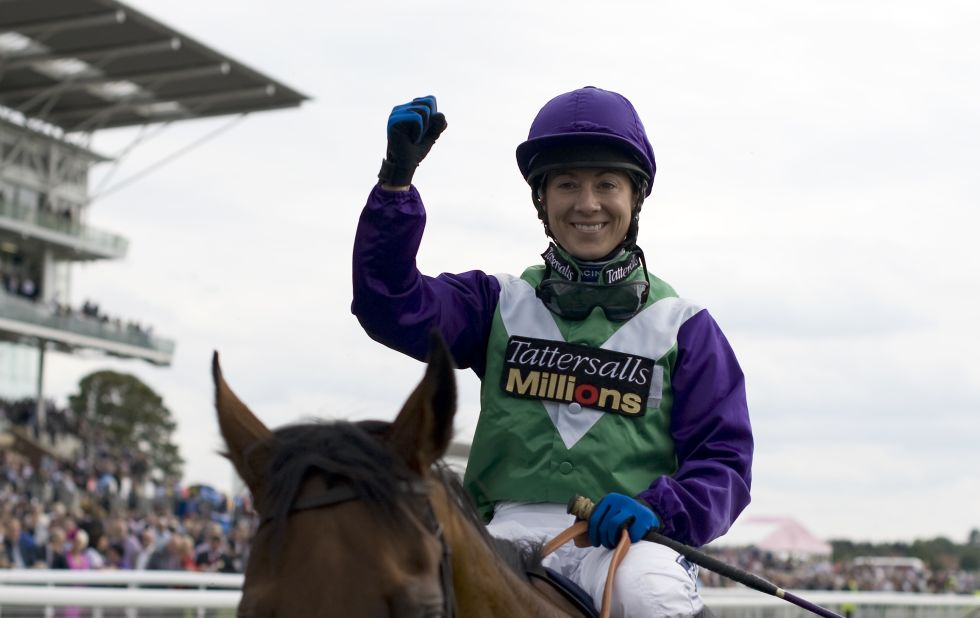Let’s talk about some of the toughest athletes on the planet. So, what are we thinking? Boxers, football players, F1 drivers, MMA? Or Jockeys?
Even though most people don’t consider jockeys to be tough due to their small physique, you’ll be surprised to find out the strength a person needs to handle a horse sprinting at 40 mph. I bet that most of the athletes mentioned before wouldn’t be able to do it.
It requires a technique, an incredibly strong physique and muscles, and a brave heart.
That’s why not everyone can become a jockey. Being a jockey requires a lot of dedication and sacrifice. First of all, jockeys are on a special diet throughout their professional life. Additionally, they undergo intense endurance training to make sure they are strong enough to ride a horse.
So, if the fitness level of jockeys directly impacts that horse’s performance in a race, the question is, why don’t many handicappers look at jockeys as a factor in betting? Find out more here.
Now that we know that jockeys are tough, let’s find out what can we learn from their routines.
Why Jockeys Have to Stay in Shape

To become a professional jockey in the United Kingdom and other nations, someone must first pass a fitness test.
Jockeys aim to keep a slim physical structure because they must be incredibly lightweight to ride. Most races have a weight limit of 118 to 122 pounds, including their equipment.
However, the rider’s weight is not the only factor that might influence his or her chances of winning the race. Because jockeys are often petite to keep inside the weight limitations, they must work hard to manage the horse while speeding around the course.
On top of that, many jockeys ride many times every day, and to perform well in all races, they must keep in condition and develop their endurance.
To compete at the top level, jockeys must be extremely fit, and each person must pass a regulated fitness test before receiving their license. Among the many exercises in the test, the jockey must hold a plank for two minutes and 47 seconds and score level 13 in the bleep test, which is equivalent to 2.62km at 14.5km/h.
Training Schedule
Here are the primary things you should concentrate on if you want to train like a jockey:
• Endurance in the cardiovascular system.
• Quads, Gluts, and Adductors are leg muscles.
• Muscles in the core.
• Stability.
• Muscles of the upper extremities.
There are several workouts for developing lower-body muscles, including squats, jump lunges, and other resistance-band exercises.
Every jockey has a distinct exercise regimen, although the majority of professional riders train at least five days each week.
Exercise Plan of a Jockey
To keep in good form, jockeys must train on a variety of muscles.
This workout typically includes eight movements, each concentrating on a different key body area. The first two workouts target the quads and comprise a squat for 40 seconds followed by a jump lunge for 40 seconds, with a 20-second break in between.
The second leg of the circuit then concentrates on the treatment. The first exercise is 40 seconds of flutter kicks followed by 40 seconds of a prone Superman stance. The circuit’s concluding leg is all about cardio, with 40 seconds of burpees followed by 40 seconds of bear crawls over 10 meters. The circuit’s last leg is solely focused on balancing.
The first exercise is a one-legged balancing hold for 40 seconds, followed by 40 seconds of single-leg deadlifts. Following that, each of the eight exercises should be done three times.
Workout Session

Many people prefer to cycle, run, or undertake a HIIT workout that involves aerobic exercises like burpees and bear crawls to enhance their endurance.
There are several workouts for developing lower-body muscles, including squats, jump lunges, and other resistance-band exercises.
To strengthen your core muscles, try the plank (fit jockeys must be able to hold the posture for at least 3 minutes), flutter kicks, scissor exercise, the prone superman, and other exercises.
Balancing exercises include one-leg activities such as one-leg squats or the running man exercise, as well as the use of specific equipment such as a BOSU, balance disk, or balance board.
Weight training is ideal for a full-body exercise since deadlifts target several muscle groups, but it also allows you to focus primarily on your upper extremities.
Routine Before A Big Race
The procedure before a big race would most likely alter according to the jockey since some will have their pre-race rituals to bring good luck.
The majority, however, will arrive at the racetrack where the meeting is taking place early in the morning to provide them time to set up before their rides in the afternoon.
Many riders choose to work around the track to familiarize themselves with the course and test the ground to see if they can discover a method for the race that they are racing in. Many riders will not train out much and have a special meal plan (staying off carbs) before a big race.
Final Words
What can we learn from jockeys? Well, to become fit, you have to work hard all the time. On top of that, dedication is a really important factor for jockeys and their only ticket to success.

Jean Smith is a fitness enthusiast and blogger who focuses on fitness and a healthy lifestyle. She is passionate about assisting people in living healthier lifestyles and is constantly on the lookout for new and creative methods to stay fit and healthy. Her articles are excellent resources for anyone interested in improving their health and fitness.
